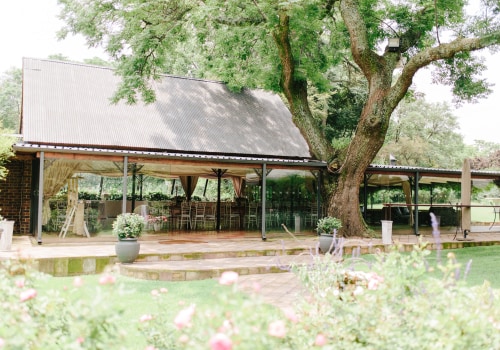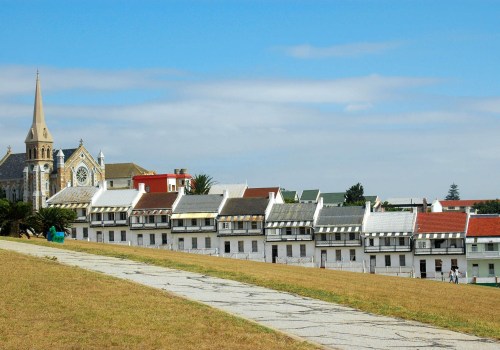The Limpopo province of South Africa is home to some of the country's most historically significant and iconic venues. From ancient ruins to grand monuments, this region has something for everyone who is interested in exploring its past. From the world-famous Kruger National Park to the majestic Mapungubwe Hill, Limpopo is a land of historical treasures. Visitors can take a journey through time and experience the remarkable stories that have shaped the area and its people.
For those who are looking to explore South Africa’s rich history, Limpopo is an ideal destination. From the unique architecture of traditional villages to the ancient rock paintings of the Makgabeng Plateau, Limpopo is full of fascinating sites that provide a glimpse into the past. For those who are interested in learning more about the region's history, there are many museums and galleries that offer a wealth of information and insight into Limpopo's past. In addition, visitors can take part in numerous guided tours and activities that allow them to experience all that this incredible region has to offer.
For those who are seeking a truly unforgettable experience, there are plenty of opportunities to explore Limpopo’s renowned national parks and reserves. Here, visitors can get up close and personal with some of Africa’s most spectacular wildlife and explore its unique ecosystems. Whether you're looking for an adventure or a peaceful retreat, Limpopo offers something for everyone. Limpopo, South Africa is an area of immense historical significance. Its ancient ruins, such as Mapungubwe Hill, are reminders of the past and evidence of its rich history and culture.
The arrival of Jan van Riebeeck and the Great Trek led to many changes in this area, with some of the most important historical venues in South Africa being located here.
Mapungubwe Hill
is one of the most significant historical sites in South Africa. This ancient city is thought to date back to the Iron Age, and is one of the oldest inhabited places in the country. It was home to a great kingdom that was a powerful trading hub for gold and ivory between 1220 and 1290 CE.The ruins of this city are now a UNESCO World Heritage Site.
Kruger National Park
is another important venue in Limpopo, as it is home to some of South Africa's most iconic wildlife species. This park is a popular destination for both tourists and locals alike, and it offers a unique insight into the region's natural beauty and wildlife. The Limpopo region also has a strong connection to two important figures in South African history: Paul Kruger and Hendrik Verwoerd.Kruger was the first president of the Transvaal Republic, and his actions helped to shape the future of this area. Verwoerd was Prime Minister of South Africa from 1958 to 1966, and his policies had a huge impact on the nation's history. Both men were instrumental in shaping the political landscape of South Africa, and their influence can still be seen today. In conclusion, Limpopo has a long history that dates back centuries.
Its ancient ruins, such as Mapungubwe Hill, provide evidence of its rich culture and history. The arrival of Jan van Riebeeck and the Great Trek had major implications for this area, and some of South Africa's most iconic venues are located here. The region is also associated with two influential figures in South African history: Paul Kruger and Hendrik Verwoerd. Their actions have shaped the political landscape of the country, making Limpopo an important part of South African history.
Cultural Significance
Limpopo has played an important role in South African culture for centuries.The traditional customs, music, art, cuisine, and language of the local people have been preserved throughout history and continue to influence life in Limpopo today. The traditional music of Limpopo is rooted in the local culture and is often used to celebrate special occasions such as weddings and funerals. The music consists of drums, marimbas, and vocal harmonies that are passed down through generations. The art of Limpopo is a reflection of the vibrant culture and includes various forms such as painting, woodcarving, pottery, basket-weaving, and beading.
These traditional crafts are still practiced today and can be found in many of the local markets. The cuisine of Limpopo is heavily influenced by its African roots, with dishes such as pap (maize porridge) and morogo (a type of wild spinach) being staples in many households. There is also a wide variety of locally sourced ingredients such as game meat, fruits, and vegetables that are used in traditional dishes. The language of the people of Limpopo is Sepedi, which is part of the Bantu language family.
This language has been spoken for centuries and is still widely used today. All of these cultural elements are a testament to the long history of Limpopo and its importance to South Africa's culture. They serve as reminders of the unique history that this region has to offer and provide insight into its modern-day life.
Modern-Day Limpopo
Limpopo in South Africa is a province rich in modern life and culture. Despite its long history, Limpopo has embraced modernity and is now home to many bustling cities and towns.The economy in Limpopo has seen significant growth over the years, with the agriculture sector being one of the biggest contributors. Education and healthcare have also improved significantly, as have infrastructure and transportation. This has resulted in a much better quality of life for those living in the region. Limpopo has a wide variety of industries, ranging from mining to tourism. The province has invested heavily in its infrastructure, which has led to better connectivity between cities, towns, and villages.
This has allowed people to access better education and healthcare, as well as giving the region greater access to markets and resources. Education is highly valued in Limpopo, and there are numerous institutions offering both primary and secondary education. Higher education facilities are also becoming increasingly popular, giving students the chance to pursue a wide range of disciplines. Healthcare is also improving, with public hospitals providing basic medical services. Infrastructure improvements have enabled Limpopo to become more connected with the rest of the world. Roads have been upgraded, allowing for easier access to markets and resources.
Telecommunications have also been improved, giving people access to the internet and other forms of communication. This has allowed businesses to operate more efficiently and given people access to the global economy. Overall, modern-day Limpopo is a province that is flourishing. Thanks to its rich history, culture, and investment in infrastructure, the region is seeing a huge improvement in its quality of life. With its vibrant cities, strong economy, and improved infrastructure, Limpopo is becoming an attractive destination for tourists from all over the world. Limpopo, South Africa is a province that is steeped in rich history and culture.
From its ancient ruins of Mapungubwe to its modern-day cities, Limpopo has seen many significant events throughout its past. The culture of the people of Limpopo remains vibrant, and the monuments and venues in the area are reminders of its unique history. Exploring this region is a must-visit for anyone looking to experience South African culture and learn more about its history. This article has highlighted the cultural significance of Limpopo, South Africa as well as its modern-day attractions. It is clear that the region's unique history makes it an interesting destination for tourists and locals alike.
With its fascinating heritage, Limpopo is a place that must be explored.












Leave Reply